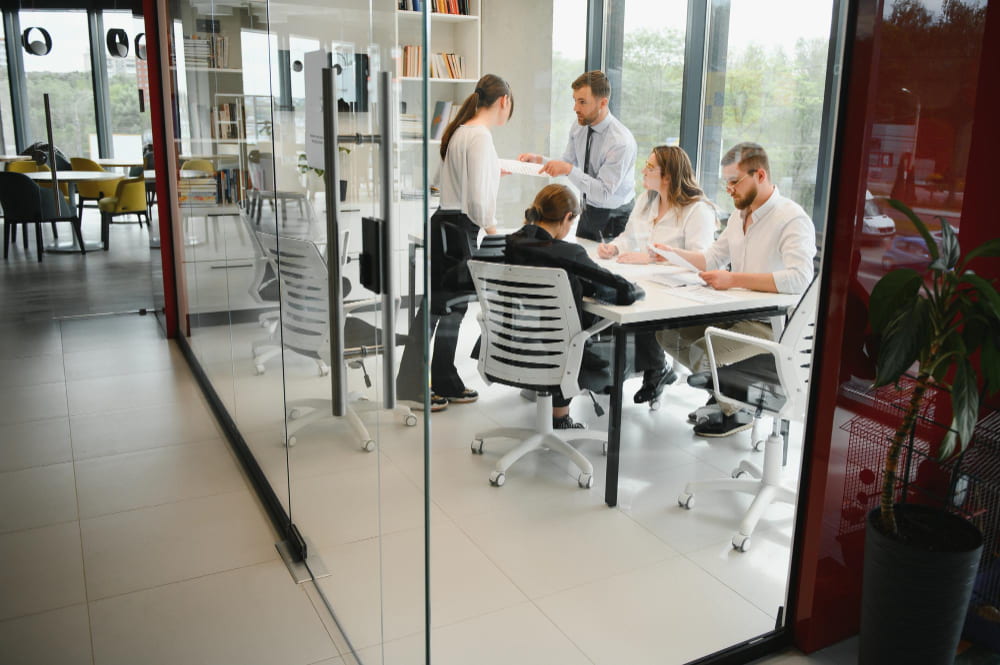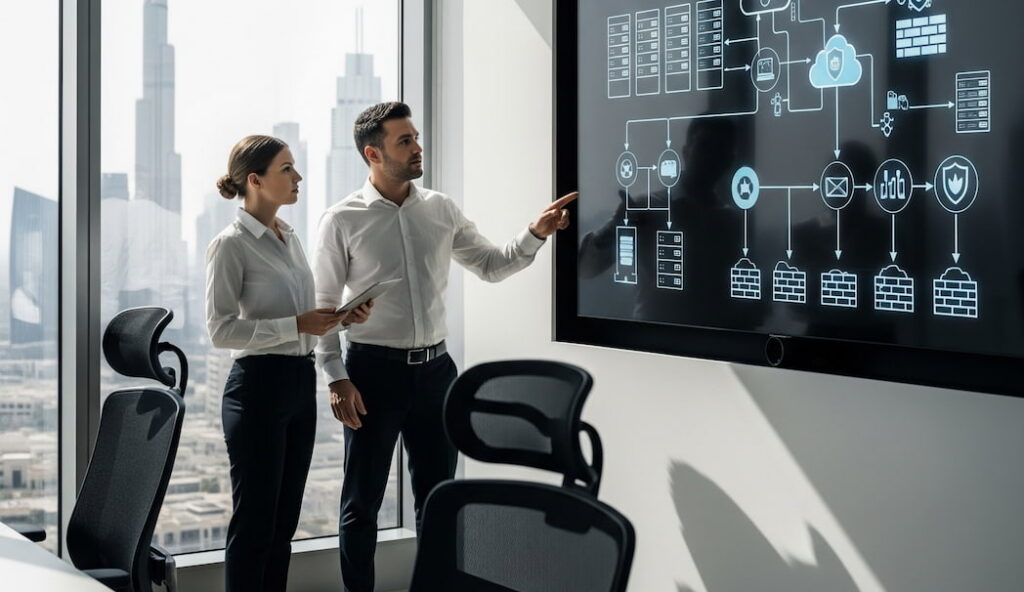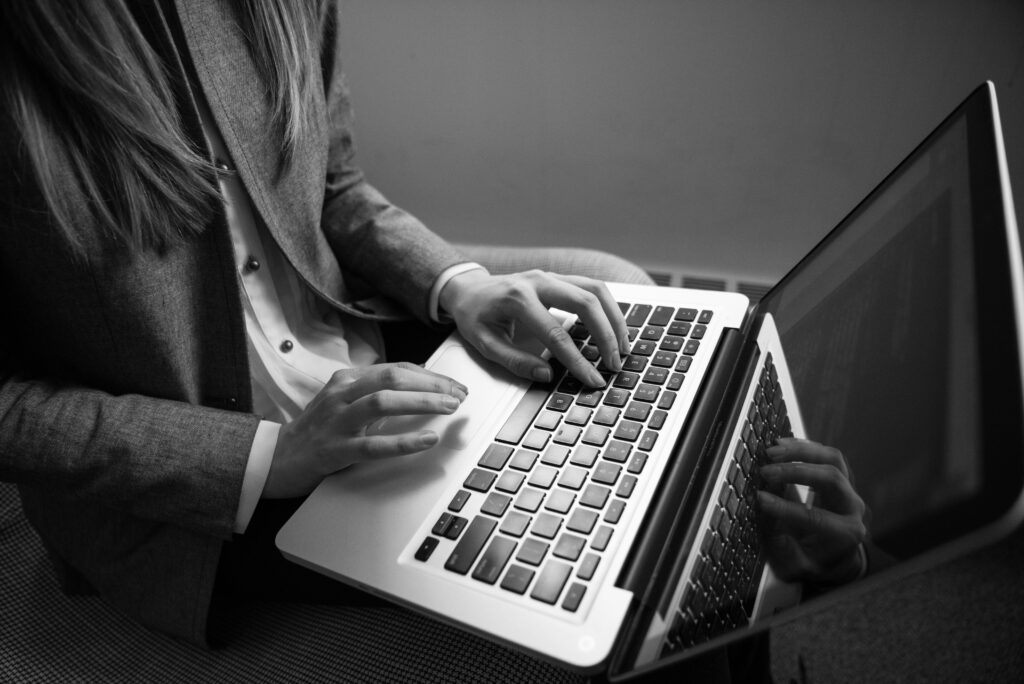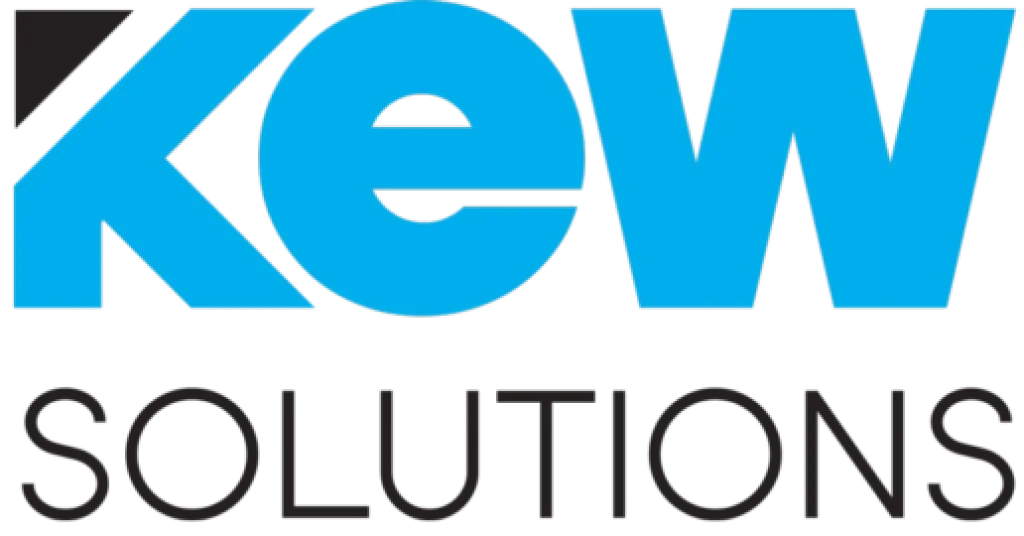Investing in a reliable CCTV system has become essential for safeguarding businesses of all sizes. CCTV cameras enhance property security, deter potential intruders, and provide invaluable footage in the event of an incident. However, a poorly executed CCTV installation can undermine its effectiveness, resulting in unclear footage, system failures, and compromised safety. By understanding the most common mistakes during installation, businesses can take preventive steps, ensuring optimal CCTV system performance and secure, high-quality monitoring.
Below, we outline the primary CCTV installation mistakes to avoid, along with best practices to help ensure your CCTV cameras are positioned and maintained for peak security.
Poor Camera Placement
Correct camera placement is crucial for maximising coverage, reducing blind spots, and ensuring the recorded footage is usable.
Obstructed Views
One of the most common mistakes is installing cameras where their view is obstructed by objects such as signs, trees, or pillars. This significantly limits the system’s effectiveness, as critical areas may be left unmonitored.
Best Practice: Before installation, survey the property to identify key areas requiring surveillance. Position cameras strategically to minimise obstructions and adjust angles to cover all important entry points, exits, and high-traffic areas. Regularly check these spots, as seasonal changes (e.g., tree growth) may impact visibility.
Insufficient Coverage
Failing to position cameras to cover the entire property often leaves areas exposed and increases the risk of blind spots. Insufficient coverage can reduce the effectiveness of the CCTV system, leaving certain locations vulnerable.
Best Practice: Assess your property’s layout and identify high-priority areas such as entrances, exits, and vulnerable outdoor areas. Place multiple cameras if needed and use wide-angle lenses where appropriate. Comprehensive planning ensures no area is left unmonitored, reducing the likelihood of blind spots.
Incorrect Angles
To capture clear images, CCTV cameras should be angled correctly. Cameras positioned too high or too low often fail to capture clear images of people’s faces, making footage less useful in the event of a security incident.
Best Practice: Adjust cameras to an appropriate height and angle that captures people’s faces and activities clearly. If monitoring entrances, position cameras to capture a person’s face as they approach rather than at a downward angle. Consistent camera adjustments ensure optimal footage quality.
Explore our CCTV Installation Services for expert camera placement.
Inadequate Lighting
Lighting plays a crucial role in ensuring high-quality footage. Insufficient lighting or incorrect lighting placement can make footage blurry and render the CCTV system ineffective during low-light conditions.
Insufficient Illumination
Poor lighting, especially in outdoor or dimly lit areas, can lead to unclear footage, making it difficult to identify individuals or activities. Lighting conditions need to be taken into account for effective CCTV operation.
Best Practice: Install lighting around areas monitored by CCTV, particularly entrances, exits, and parking lots. Consider using motion-activated lights or infrared lighting, which provide clear visibility at night without being overly intrusive.
Incorrect Lighting Placement
Incorrect lighting placement can cause glare on the camera lens, washing out footage or making it difficult to identify specific details.
Best Practice: Place lights strategically to illuminate areas without shining directly into the camera lens. Avoid placing lights behind the camera, and instead position them at angles that minimise glare while providing adequate coverage. Regularly inspect lighting placement to ensure optimal performance.
Poor Cable Management
Effective cable management not only keeps your system organised but also prevents technical issues.
Exposed Cables
Exposed cables can easily be damaged, whether by weather, tampering, or wear, leading to system failures or intermittent performance issues.
Best Practice: Use conduit piping or protective tubing to shield cables from potential hazards. Indoor cables should be routed discreetly, and outdoor cables must be properly insulated against weather conditions to prolong their lifespan.
Poor Cable Routing
Improper cable routing can interfere with other systems or create tripping hazards, posing safety risks and affecting the system’s overall reliability.
Best Practice: Plan cable routes carefully, avoiding pathways where other systems might interfere. Bundle and secure cables neatly to prevent accidental damage, especially in high-traffic areas.
Lack of Weatherproofing
Outdoor cables are especially vulnerable to weather and should be appropriately weatherproofed to prevent corrosion or degradation from extreme temperatures.
Best Practice: Use weather-resistant cables and enclosures designed specifically for outdoor cameras. Ensure connections are sealed properly, protecting against moisture ingress and extending system durability.
Lack of Maintenance
Even the best CCTV systems require regular upkeep to maintain their functionality.
Neglecting Regular Checks
Dust accumulation, lens smudges, or physical damage can severely impact footage quality. Regular maintenance helps prevent such issues.
Best Practice: Schedule routine inspections, ideally once every three months, to clean lenses, check for physical damage, and verify that all components function properly. Maintaining a checklist can help ensure no aspect is overlooked.
Failing to Update Firmware
Firmware updates are essential for the latest features and security patches. Neglecting updates can expose the system to cyber vulnerabilities.
Best Practice: Check for firmware updates regularly and apply them as recommended. Many CCTV systems offer automated updates, simplifying the process.
Ignoring Environmental Factors
Extreme temperatures, dust, and moisture can degrade equipment if not properly managed. For instance, intense heat can damage indoor cameras, while dust and debris can obstruct lenses.
Best Practice: Install cameras suitable for the environment they’re in. For outdoor or high-dust areas, select weatherproof or dust-resistant cameras. Regular cleaning and environmental checks will help avoid equipment failure.
Substandard Hardware
High-quality hardware is crucial for effective surveillance. Substandard equipment results in low-resolution footage, poor storage solutions, and limited integration capabilities.
Low-Resolution Cameras
Low-resolution cameras produce blurry images that may lack the detail needed for effective security, especially in identifying individuals or vehicles.
Best Practice: Invest in high-resolution cameras (preferably HD or 4K) to ensure clear footage. For businesses monitoring larger areas, consider higher-resolution options to capture finer details across wider spaces.
Insecure Storage
Inadequate storage solutions can lead to data loss or unauthorised access, compromising the security of recorded footage.
Best Practice: Opt for secure, encrypted storage options and consider cloud storage for added redundancy. Ensure that stored footage is accessible only to authorised personnel, using encrypted systems where possible.
Outdated Technology
Older CCTV systems may lack modern features, making integration with other security solutions challenging and limiting future scalability.
Best Practice: Regularly assess and upgrade technology. Modern CCTV systems offer features such as motion detection, remote monitoring, and better integration with other security systems, making them ideal for business needs.
Lack of Security Measures
A well-installed CCTV system is still vulnerable if it lacks robust security protocols.
Weak Passwords
Weak passwords or default login credentials can be easily compromised, giving unauthorised users access to the system.
Best Practice: Implement strong, unique passwords for each system component and update them regularly. Consider multi-factor authentication for added security.
No Cybersecurity Protocols
Without proper cybersecurity, CCTV systems are susceptible to hacking, putting business property and employee safety at risk.
Best Practice: Incorporate firewalls and encryption into your CCTV system and ensure firmware is updated regularly. This helps safeguard against unauthorised access and data breaches.
Limited Access Controls
Failure to restrict access to the system increases the risk of tampering or unauthorised access.
Best Practice: Limit access to authorised personnel only, and use access control protocols such as logins, biometric authentication, or multi-factor authentication to protect against security breaches.
Learn more about our expert CCTV installation services and how we can help secure your business.
Common FAQs
What happens if I don’t test the CCTV system after installation?
Testing ensures all cameras, connections, and features are functioning as expected. Skipping this step can result in unnoticed issues, leading to downtime or insufficient coverage during critical moments.
Why is camera resolution important in CCTV installation?
High-resolution cameras capture clearer, more detailed footage, crucial for identifying individuals and activities. Blurry or low-resolution footage reduces the system’s overall effectiveness.
How can poor power supply affect CCTV installation?
A poor power supply can lead to interruptions, inconsistent recording, or system failures. Investing in a stable power source and considering backup options, like uninterruptible power supplies (UPS), ensures consistent system performance.
What can happen if I don’t secure the DVR/NVR properly?
An unsecured DVR/NVR can be stolen, damaged, or accessed without authorisation, leading to data loss or tampering. Protect your DVR/NVR by securing it in a locked, tamper-proof cabinet.
Conclusion
Avoiding common CCTV installation mistakes ensures that your system performs optimally, safeguarding your business, property, and personnel effectively. By focusing on proper camera placement, robust lighting, regular maintenance, and cybersecurity, you can achieve a reliable and secure CCTV system tailored to your needs.
For expert guidance on CCTV installation and to enhance your business security, contact us for professional services designed to deliver robust, future-proof solutions.









